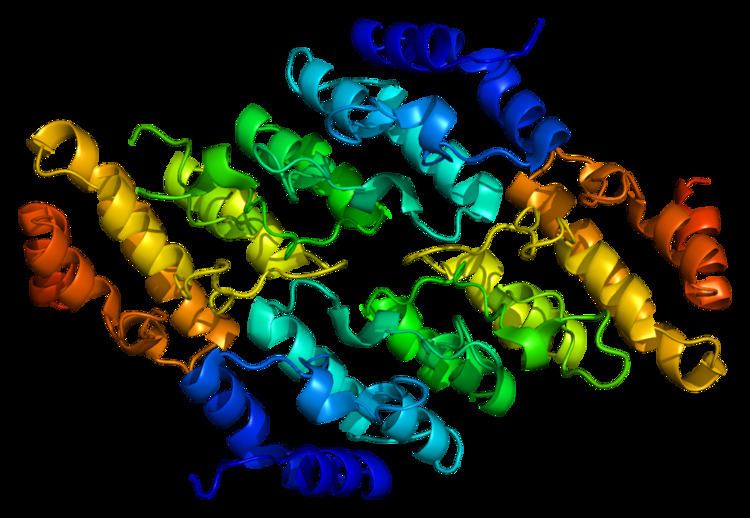Species Human Entrez 51393 | Human Mouse Ensembl ENSG00000187688 | |
 | ||
Aliases TRPV2, VRL, VRL-1, VRL1, transient receptor potential cation channel subfamily V member 2 External IDs OMIM: 606676 MGI: 1341836 HomoloGene: 7993 GeneCards: TRPV2 | ||
Transient receptor potential cation channel subfamily V member 2 is a protein that in humans is encoded by the TRPV2 gene.
Contents
Function
This gene encodes an ion channel that is activated by high temperatures above 52 °C. The protein may be involved in transduction of high-temperature heat responses in sensory ganglia. It is thought that in other tissues the channel may be activated by stimuli other than heat.
History
TRPV2 was independently discovered by two research groups and described in 1999. It was identified in the lab of David Julius as a close homolog of TRPV1, the first identified thermosensitive ion channel. The group of Itaru Kojima from Gunma University was looking for a protein which is responsible for the entry of calcium into cells in response to insulin-like growth factor-1 (IGF-1). Upon stimulation of cells with IGF-1 TRPV2 translocates towards and integrates into the cell membrane and increases intracellular calcium concentrations.
Activators and inhibitors
TRPV2 is activated by high temperatures above 52 °C. Alternatively it can be activated at lower temperatures by chemicals, such as the research tool 2-APB, the plant cannabinoid cannabidiol, and probenecid. It is blocked by ruthenium red and lanthanum.
